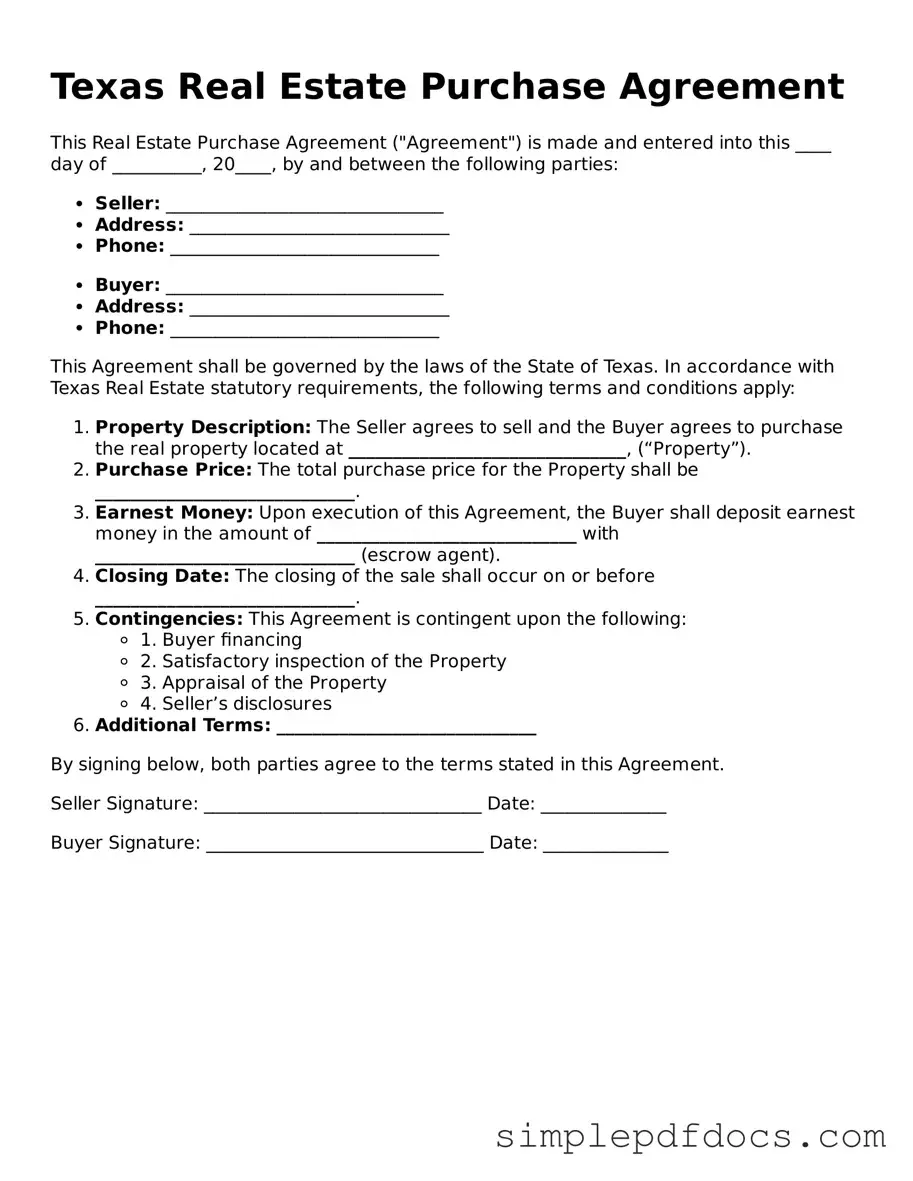Legal Real Estate Purchase Agreement Document for the State of Texas
The Texas Real Estate Purchase Agreement is a legally binding document used to outline the terms and conditions of a property sale in Texas. This form serves as a crucial tool for buyers and sellers, ensuring that both parties are on the same page regarding the sale. Understanding its components can help facilitate a smooth transaction and protect everyone's interests.
Get Document Here
